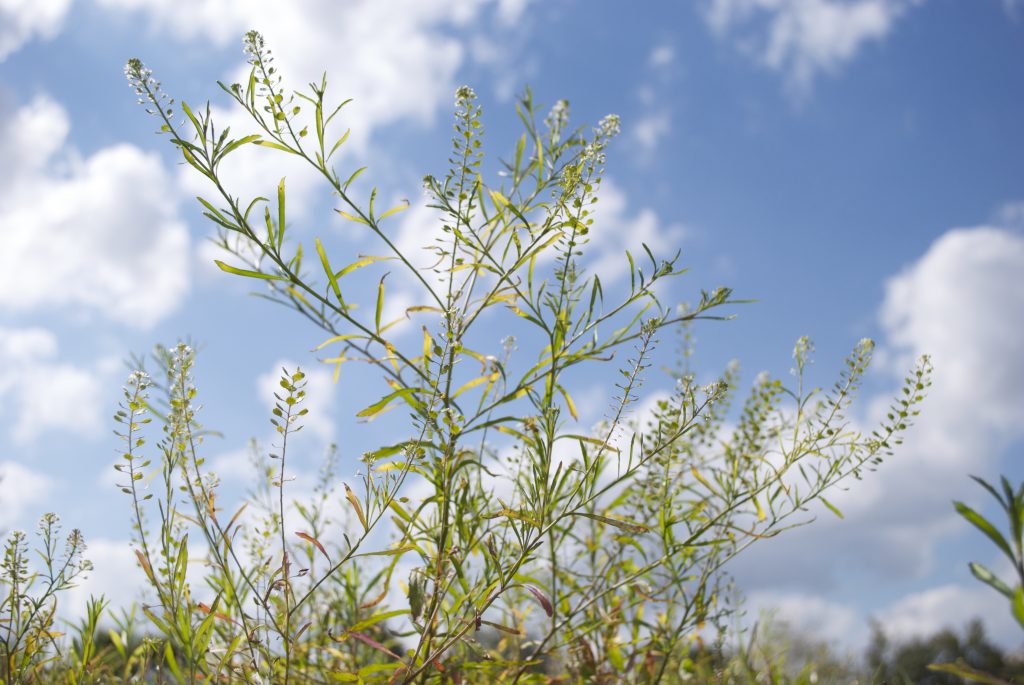
Peppergrass starts as a basal rosette then sends up a flower spike. Photo by Green Deane
Lepidium Virginicum: Bottlebrush Peppergrass
There are two ways of thinking about peppergrass, either as a real neat wild treat, or an obnoxious weed. Regardless of your world view — or weed view — peppergrass is a survivor and part of man’s diet for many thousands of years. As far back as 300 BC Pliny was writing about the Lepidium, and more than a thousand years before that the Incas were cultivating it.
There are about 175 different Lepidiums, no doubt some native to your area and some imported. Growers dislike them because raw they can flavor milk and are herbicide resistant. (Fermented peppergrass, however, is an excellent silage feed for cattle. ) Pictured is “Poor-Man’s-Pepper” Lepidium virginicum (leh-PID-ee-um vir-GIN-i-kum). Virginicum means “North American” and Lepidium is dead Latin’s bastardization of Greek for little fish scale, Lepidion. And indeed, with a little imagination the notched seed pods of the Lepidium can look like little fish scales, some say little purses, I think flat, tiny lentils. Modern Greeks call this (and the related Shepherd’s Purse) kardamo which means cress.
While in many places Lepidium is a winter and spring visitor, it is a year round plant here in Florida though it is most noticeable and happiest in winter here. The young leaves can be added to salads or soups — they are peppery. The seed pods can be used like pepper. The root, ground and mixed with vinegar is a good substitute for horseradish. I like them as a trail side nibble. The leaves contain protein, vitamin A and are rich in Vitamin C. There are no poisonous look-alikes. If you have a Peppergrass with really large seeds it might be Thlaspi arvense, an edible relative.
As with all mustards, it has a tiny four-petal flower, whitish-yellow with two stamen. Bees like them. The flowers are on elongated racemes, which lends them to the classic description of looking like a small bottle brush. The leaves are deeply toothed. First the plant produces a low rosette of deeply cut basal leaves, then vertical growth and seeding. Some species in some places are biennial, rosetting one year, growing up and seeding the next.There are actually four very common Lepidiums and variations in all of North America. The leaves and seeds tell them apart but their use is the same. The shape of the seeds spell T.H.O.R. and that is how I remember them.
The Cow-cress, Lepidium campesire, has basal leaves that embrace the stem — making them rise up — and a seed pod shaped like a front Tooth, with a tiny nick at the end. A close relative, the Shepherd’s Purse, Capsella bursa-pastoris, below, resembles “Poor Mans” but its seed pods are Heart-shaped. “Poor-Man’s Pepper” has deeply toothed leaves and an Ovalish seed pod with a small notch at the end. Pennycress resembles “Poor Man’s” as well, but the seed pods are Round and deeply notched. The common horseradish, that the sauce of the same name is made from, is a relative though it is much larger and has tiny egg-shaped seed pods. That the family is nutritious is just the beginning of the story. There are medical uses, some proven. The L. virginicum is antiamoebic, for example.
In a 2003 study looking for antiprotozoal agents from plants researchers found “a crude extract from the roots of Lepidium virginicum exhibited antiprotozoal activity against Entamoeba histolytica trophozoites,” one nasty bug. “The results support the anecdotal reports for the traditional use of L. virginicum roots in the control of diarrhea and dysentery in the highlands of Chiapas, Mexico.”
Perhaps the most famous Lepidium, however, is Lepidium peruvianum, also know as Maca. It grows a tuber that has been used to “enhance” fertility in man and beast. Research shows it also relieves stress.
Maca is hardy, being cultivated high in the Andes at altitudes from 8,000 to 14,500 feet. It has the highest frost tolerances of all plants and takes seven to nine months to produce a root, which can be eaten fresh or dried. They can be stored dry for as long as seven years. L. peruvianum roots have a tangy, sweet taste similar to butterscotch. In Peru they are eaten as is or made into jam, pudding, porridge, soda even a fermented drink called Maca Chicha.
There is a debate whether the Maca sold today is L. peruvianum or Lepidium meyenii, with the latest opinion favoring peruvianum. Called the “natural viagra” Maca has caught the attention of the non-Peruvian world: In 1994 less than 50 hectares were used in the commercial cultivation of maca; by 1999 over 1200 hectares were under production. It now exceeds 2000 hectares.
Those 2000 hectacres are found high in the Andes, an inhospitable place of intense sunlight, violent winds, and below-freezing weather. With such extreme condition and poor, rocky soil, the area is among the world’s worst farmland. However, Maca evolved to live under those conditions as have most mustards. They can be found growing in Greenland and the Arctic circle. The Incas domesticated Maca about 2,000 years ago, and primitive versions of Maca — early cultivars — have been found in archaeological sites dating back nearly 4,000 years.
If you’re not inclined to eat the peppergrass, then there is another use: the dried seed stems make a great addition to dried arrangements and wreaths. They are showy, sturdy, and last for a long time.
Sometimes you have to approach an edible plant’s nutrition obliquely. Peppergrass is a good example. There’s been research on the plant for inhibiting pathogens but not much on nutrition. However a 1944 study involving silage (cattle food) gives us some insights. (Journal of Dairy Science, Vol 27, Issue 5, pp 365-367.)
There was a heavy stand of Peppergrass (Lepidium virginicum) at the Virginia Agricultural Experiment Station at Blacksburg Virginia. There was too much to let it all go to seed but if they left it it would smother out the alfalfa they were growing. Mowing, racking and hauling it away was costly if no use was found for. So they decided to use it for silage. It was a bold idea because plants in the greater mustard family can taint the flavor of milk.
The ten acres yielded approximately 28 tons of Peppergrass. They mixed it with 50 pounds of molasses per ton as a preservative then let it ferment. At the end of fermentation there was no odor or flavor of peppergrass. They also tested the nutriments of the peppergrass before and after ensilaging. By weight the Peppergrass was 3% potassium, 1.34% calcium, 0.40% magnesium and 0.23% phosphorus. After fermenting the amounts were slightly less. Alfalfa was in the finished silage but the study did not make clear if it was also analyzed with the peppergrass.
As for other nutriments we have to rely on an unpublished report. A newspaper article in June 1990 said a sample of Peppergrass had been sent sent to the University of Florida Herbarium for analysis. The analysis reportedly said Peppergrass was high in vitamin C (as ascorbic acid) a good source of vitamin A (beta carotene) and iron. It was also a good source of protein. This would be in keeping with it as a member of the greater mustard family. There is also a 1951 University of Florida report on B vitamins in common produce and some wild plants. They included Peppergrass. Per 100 gram serving it has 0.045 mg of B1 (thiamin) 0.623 of B2 (riboflavin) and 2.54 mg of B3 (niacin.)
Another thing we can do is look at Peppergrass’ relatives. We have reports on two: Lepidium sativum (Garden Cress) and Capsella bursa-pastoris. Garden Cress per 100 grams of fresh leaves has: 32 calories, 2.6 grams of protein, 0.7 grams of fat, 5.5 grams of carbohydrates, 69 mg of vitamin C (meeting your daily need) and 930 RE of vitamin A. The minerals are 606 mg potassium, 81 mg calcium, 76 mg phosphorus, 14 mg sodium, and 1.3 mg iron.
Here’s a recipe from Leda Meredith who forages in New York City .
Peppergrass Chermoula
Chermoula is a North African marinade that is usually used with seafood. It is also wonderful on steamed vegetables and mixed into whole grain salads.
1 large clove garlic, peeled OR several underground field garlic bulbs
1 tablespoon fresh green peppergrass seedpod discs
1 small hot pepper
1/2 cup fresh cilantro (coriander) leaves
1/4 – 1/2 cup extra-virgin olive oil
1/2 teaspoon salt
1. Place the garlic, peppergrass, chile pepper, and cilantro in a food processor and pulse to finely chop. Scrape down the sides of the food processor bowl with a spatula and pulse again (repeat a few times to end up with a more or less evenly minced mixture).
Alternatively, finely chop the garlic, chile and cilantro. Pound them together with the peppergrass with a mortar and pestle.
2. Add the salt and 1/4 cup of the olive oil and blend. You want to have a slightly liquid paste. Add more olive oil if needed.
Chermoula will keep in the refrigerator for up to 2 months.
Green Deane’s “Itemized” Plant Profile
IDENTIFICATION: Flower: Four petals, two stamen. Fruit: See seed. Leaves: Lobbed, toothed, varies, long to lance shape. Stem: Erect. Seed: Seed pods vary in shape round the stem. Root: Tap root vertical
TIME OF YEAR: Springtime into summer
ENVIRONMENT: Well-drained soil, sandy to rich, old pastures, gardens, lawns, roadside, nearly any sunny spot
METHOD OR PREPARATION: Leaves as potherb, seeds for spice or pepper flavoring, can use flowers to flavor vinegar. Some young leaves can be used raw in salads. Try a little first. Can blanch leaves then saute.


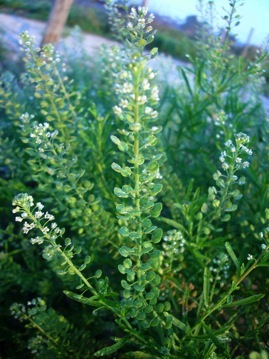
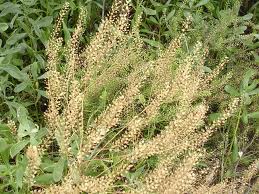
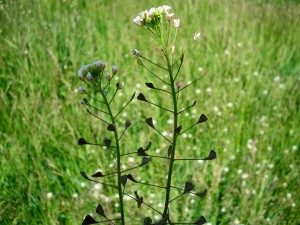
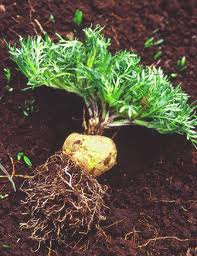

OMG!!!!!! I HAVE HIT THE JACKPOT!!!! I’ve been looking for an informative and easy to understand website about “foraging” wild/natural plants here in central Florida. THANK YOU SO MUCH!!!! I’m am so excited about learning more from your website I can hardly contain myself. LOL!!!! Do you have a “handbook” with pix/info about native plants I can “forage” here in north Brevard. I’ve already discovered this “Poor-man’s-Pepper” plant and I’ve recently discovered the American BeautyBerry’s. I am looking forward to exploring your website. So again, excuse my enuthisiam, THANK YOU!
Best Regards,
Brian
bdredwyatt@hotmail.com
thanks for writing… no I don’t have a handbook.. that’s something I have to work on. PS: I used to live in Mims…
another question- how do i germinate them!? the lepidium and the persimmon?! The acorns (grub free and unwanted for the flour you’ve taught me how to make) that i want to sit under shade of before i die, how do i get them to germinate, to tenderly sprout? All of these wonderful plants you’ve shown me i will to spread and sow in the areas i know, in secret gardens and hidden plots. but alas the info for when to plant i do not find among your site, or if the seeds need to be cold treated. so would you then do an episode or article, on what could become of the seeds, whose apple you use to make what im sure is the best, hard cider? this way when i see the juniper i can bring it home, and keep it. grow it and have it forever. or if you already have an episode or article on seed/nut germination could you direct me to it? i like foraging and all but i would love to have all the wild bounty in my backyard.
As I answered elsewhere it is a complex topic. Some seeds require not treatment at all to germinate others require chill hours, light, fermenting, humidity, a combination… one good book is Seed To Seed by Suzanne Ashworth.
Orlando here !! Pepper grass is so abundant here. My best friend’s dad was Morgan Alderman from Morgan Alderman Road in Mims on Lake Harney. Small World it is.
Hey Deane, have you eaten the Lepidium didymum (LESSER SWINECRESS)? It grows pretty much all over Florida, in scattered counties. I read that it is peppery, like a hot cress. http://florida.plantatlas.usf.edu/Plant.aspx?id=398
I like Lepidium virginicum as a nibble for its spiciness.
It seems that the spiciest seeds are the fatter light green ones… older thinner seeds don’t seem so spicy. Plus, dried seeds have almost no flavor whatsoever.
I have nibbled the roots a bit, but they seem pretty flavorless…
The plants around here however, seem to be a mower induced, micro ecotype, scrubby and about 5 inches tall. There is no question as to whether it is the right plant or not… it just looks like the midget version.
When I was a child I used to snack on this stuff!
On stressing days (like after a morning game) I’d find myself a shady area under a tree or patch of grass and watch the clouds pass by while nibbling on the ‘weed’. I’d carefully peel the hearts, eat the seeds, then the hearts finally. Very relaxing, although I’ve now read that it has stress-relief properties. Funny that!
Recently I moved across the country (from west to east Canada) and so far I’ve not found any of them here, even though they ‘should’ be about. But I’ll keep looking!
I love your website btw – lots of good information with a healthy dose of humor. You can be sure my future gardens will be full of ‘weeds’ such as the above.
For a while I have been wondering the name was of this very common plant that is not Shephard’s Purse, but which must be closely related. Thanks for clearing up my mystery.
the incas were amazing. they had beter postal service than any where at any time in recorded history, they wove fabric that can only be dreamed of by modern textilist(?). most importantly, they took the best food crops in the world, and turned them into root crops! can anyone here say that they have gone a week since being weened where they did not eat an incan crop? maybe once or twice for me.
I loved your class in Port Char. on the 13th of April. Thank you again for sharing your knowledge with us! I had a quick question about the Poor Man’s Pepper. Could it be cultivated now, then dried to use in November? My lawn is overgrown with Biden, pepper and also that cucumber flavored plant you taught us about. Want to add some to my squirrel meat in November when season opens. But I vaguely remember you saying that the cucumber one is a springtime plant. So wondered about drying it to use later. Any ideas? Thank you again for your class and time. You are a wonderful teacher!!!!
Any tips on processing the roots? I tasted them and liked the horse radish flavor, but after cleaning them, i tried to use them to no avail. I pounded them, chopped them and put them in the food processor. After nearly a half hour of processing all i seem to end up with is gnarled rope. thanks for any advice!
Here in the Himalayas where they are native, we eat Lepidium latifolium after leaching the bitterness out. It’s a delicious green, like spinach but thicker and richer. In the US I read that it is an invasive weed. So if you have a local infestation, here’s how to use it:
When it sprouts in the spring (one of the earliest plants, due to its deep rampant runner roots) pick the tips with small leaves, total about 4 to 6 inches at the end of each branch. Don’t take the thicker leaves. You can keep harvesting it again several times, but quit when the tips start forming flower heads. The tips and their stems, even if thick, are tender and succulent.
Boil them about 5 min., till a sharp mustardy smell fills the kitchen and the greens turn a darker color. Leave to cool, then soak in plenty of fresh water for a day or two, changing the water for fresh when you get around to it. If it’s your first time, soak for two days, but if you like faintly bitter foods, or if the soaking is very effective, then they are good after one day.
Taste, and when the bitterness is gone, chop roughly and fry like spinach with some onions and garlic. Here it’s a traditional breakfast with chapattis and it’s yummy!
We dry a lot for winter every year. Just strew the tips out in a single layer somewhere dry and well ventilated. Our climate is desert; maybe in a humid climate you’d have to put them in a dryer. They keep a nice fresh green color. When using the dried ones later, do the same as for fresh: boil and then soak, but one day is probably enough now.
This is exactly the same method we use for caper greens, Capparis spinosa. Pick the shoots in the spring, and the thick stems are actually very yummy. Boil a few minutes, then soak in a few changes of fresh water for a day or two, and then fry, and wow, they are the most delicious meal with chapattis!
But Lepidium latifolium is a very vigorous and rampant wild plant forming dense stands, while capers are few and far between.
So, does pennycress have the same uses as peppergrass?
Different families, different uses.
Thought you might enjoy this information about peppergrass:
Common backyard weed may curb cancer risk:
http://www.naturalnews.com/037572_backyard_weeds_natural_medicine_cancer.html
If you note they included me as one of the references for the article.
As they should.
Here in central Mexico, this plant is used as a tea to treat upset stomachs and aid in other digestive issues. Enjoyed reading your article here!
Concerning the four different Lepidiums, when you say the shape of the seeds spell T.H.O.R., what do you mean?
Thank you. 🙂
One is shaped like a Tooth, one is shaped like a heart….
Great info so needed on pepper grass.
When I moved to north Florida in 96′ , my JROTC teacher took the class around the outsides of the school grounds showing us various edible plants and helpful one’s. This one in this article we found all over one area . He gave a explanation of the plant and some of us tried it, had a taste of a radish from that one I tried. I see it everywhere around me and it has just a grass earthy taste, some reason it didn’t feel like it was a edible version of it. I Don’t know.
I’m curious about a tuber I dug up in my garden. I tilled down about 1′-18″, and found these tubers that’s are smaller than a Clive if garlic and smell like black pepper My daughter’s ex is a farmer and survivalist, he says that I can dry them and use them as a seasoning. He didn’t tell me the name, though. Any clue? They were growing deep under some clover in the garden.
I ate some whole boiled L. virginicum and it had a pleasant potato like taste. No pepper taste though, 100% on the genus ID, so I assume boiling removes it. There’s a distant outside chance it was a more local species, L. didymum so maybe that one tastes bit different but that seems unlikely.
love this website, i can’t wait to go in my backyard and find some of the edible weeds!